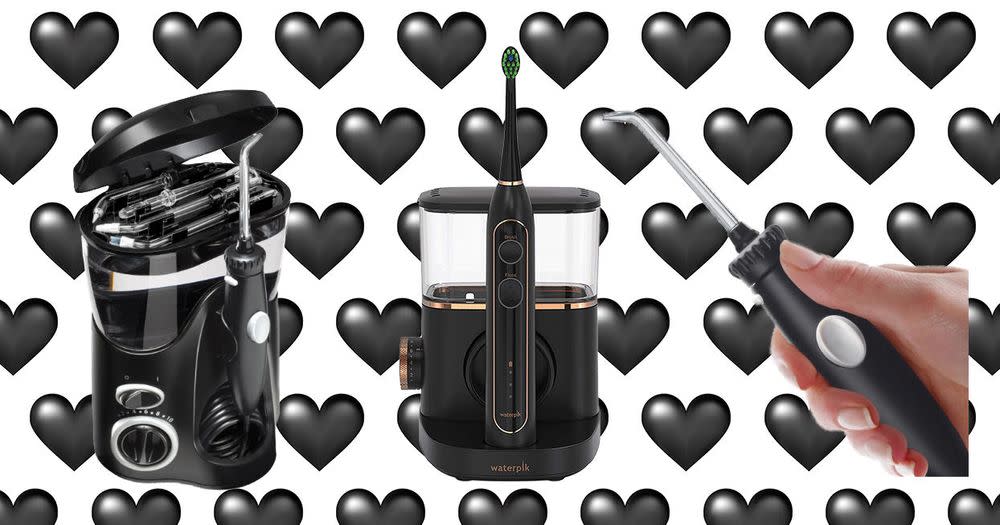Are Waterpik Water Flossers As Effective As Flossing?

Photo: Meowu/Getty Images, Amazon
Making time to use a waterpik is a lot to ask of someone who's already brushing, flossing, and rinsing daily. But it seems like a lot of dentists—maybe even 10/10—recommend using the device. So is a waterpik key to a clean and healthy mouth or more of a glorified squirt gun? Here's everything you should know. (Related: 5 Ways Your Teeth Can Impact Your Health)
Why You Might Use a Waterpik Water Flosser
Basically, if you want to get a gold star at your next dentist appointment, a waterpik can help make that happen. (Waterpik, a brand name, is colloquially used interchangeably with the generic term water flosser.) The device blasts water or mouthwash onto teeth to remove plaque, the bacteria-heavy film that forms on teeth that can harden into tartar or calculus and lead to cavities and gum disease.
Waterpiks are an especially useful tool for people who already have periodontal (gum) disease and need to be extra diligent about cleaning their gums. One result of gum disease is the loss of interdental papillae (the pointy part of your gum that extends between your teeth). "As you get older or have gum disease, that part goes away and now there's a spot below where your teeth contact where stuff gets stuck," says Jamie Reynolds, D.D.S. "A waterpik-type device can be helpful in those situations." It's also super helpful to utilize a waterpik with braces, which tend to collect bits of food, he notes. (Related: You Need to Detox Your Mouth and Teeth—Here’s How)
Can a Waterpik Replace Flossing?
Short answer: No. Waterpiks can reach debris that flossing can't get to and vice versa, says Oleg Drut, D.D.S., clinical director at Diamond Braces. In addition to the previously mentioned pockets that result from gum disease, waterpiks shine when it comes to reaching the very back teeth.
If you only have the patience for one, stick with manual flossing. "In most instances, brushing and flossing is sufficient," says Reynolds. "Brushing in the morning and evening and if you can after lunch, and flossing at least once a day will go a long way toward preventing most dental issues." But ideally, you'll use all three in tandem: brushing, flossing, and water flossing. "The waterpik is a must-have in an oral health routine," says Drut. "I usually recommend using them once or even twice a day."
What's the Best Waterpik?
Convenient as they are, skip cordless waterpiks, advises Drut. Plug-in options tend to have a more powerful pump, he says: "The stronger the pump, the stronger the spray that massages the gum tissue and flushes away the bacteria."
Here are three popular options that have all earned the American Dental Association (ADA) Seal of Acceptance:
Waterpik Aquarius Water Flosser
has 10 pressure settings and seven interchangeable tips. On Amazon, it's a regular fixture on the personal care bestsellers list with 11,000 positive reviews and counting.
is an electric toothbrush and a water flosser in one. You can switch back and forth to brush and water floss without switching devices.
Waterpik Ultra Water Flosser is a cheaper option than the above models, but it can reach the same pressure: 100 pounds per square inch (PSI).

